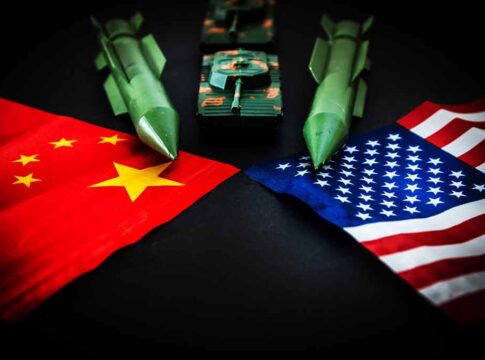Conservative lawmakers and defense experts are sounding the alarm that the United States is dangerously unprepared for a potential nuclear confrontation with China. The warnings from influential conservatives highlight how America’s extended focus on Middle Eastern conflicts has diverted attention and resources from addressing the rapidly evolving threats in Asia. Is America’s aging nuclear arsenal sufficient to deter China’s rapidly expanding military capabilities?
China’s Nuclear Expansion Threatens U.S. Dominance
China has dramatically accelerated its nuclear weapons program, tripling its arsenal in just five years with plans to reach 1,000 warheads by 2030. This rapid expansion presents a growing threat to American military dominance in the Indo-Pacific region, where China continues to build advanced capabilities, including anti-ship nuclear weapons and space-based platforms.
Senator Deb Fischer of Nebraska highlighted this shifting global threat landscape, noting, “We had Russia, we thought, under control with the breakup of the Soviet Union. We always thought China would be an economic threat.” The situation has evolved beyond economic competition into a serious military challenge as China rapidly builds both conventional and nuclear forces aimed at limiting American influence in Asia.
China’s military is increasingly confident & willing to directly challenge the U.S. Failing to restore national deterrence & prevent a war in Asia could result in the most destructive & consequential war America has ever had to fight. @brentdsadler https://t.co/7svBC95cqI
— Heritage Foundation (@Heritage) March 31, 2025
America’s Aging Nuclear Arsenal
Military experts describe America’s nuclear arsenal as dangerously outdated, with the newest weapons approaching 40 years old. Bob Peters from the Heritage Foundation colorfully summarized the situation: “Like a 1975 Cadillac bought by our grandfather, we’ve been keeping America’s strategic deterrence on life support.”
The United States has reduced its nuclear arsenal by approximately 85% since the Cold War peak, including the removal of tactical nuclear weapons from Korea in 1991. This dramatic reduction occurred during a period when the Pentagon’s focus shifted toward counterterrorism and counterinsurgency operations in the Middle East, leaving America potentially vulnerable to new threats emerging in Asia.
The Call for Comprehensive Modernization
Conservative lawmakers are urging the Trump administration to prioritize nuclear modernization to address the growing imbalance with China. Representative Chip Roy of Texas connected America’s current predicament to past strategic choices, stating, “Part of this is a hangover from what I call endless wars, where, instead of having that strong deterrence, we got involved with, you know, a quarter-century of endless conflict that caused a great toll, both in terms of blood and treasure.”
Defense experts recommend a comprehensive approach including modernizing strategic missiles, developing new tactical nuclear options, and building a stronger Navy based on actual strategic needs rather than contractor influence. The underlying message emphasizes that peace through strength requires demonstrating credible military capabilities that can deter adversaries like China, Russia, Iran, and North Korea from aggressive actions that might threaten American interests or allies in vital regions.

